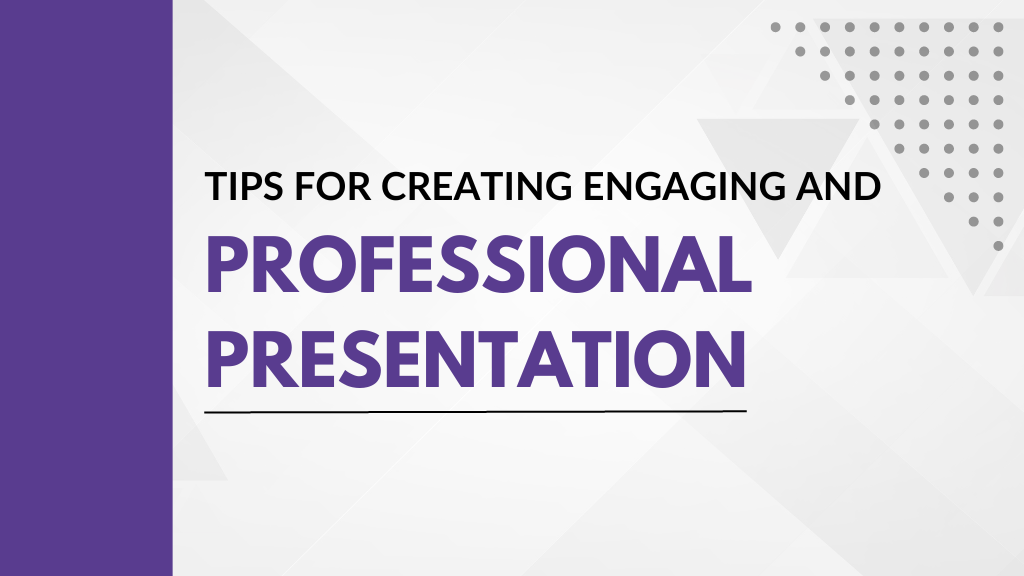Presentations have become intrinsic to corporate life, academic life, and other professional fields. They can consolidate complex thoughts into digestible knowledge or persuasively demonstrate a product’s benefits. However, not all presentations are engaging or professional. Some are dismal, tiring, and fail to convey the intended message relevantly and impactfully. To avoid this, you need to understand several practical ideas that can command your audience’s attention and communicate your message effectively. This article provides in-depth insights and steps to achieve just that. Keep reading to learn more.
Understanding Your Audience
Every effective presentation begins with understanding the audience, who they are, and what they expect from your presentation. This initial analysis allows you to tailor your message accurately, ensuring it resonates with your audience. Understanding your audience also helps you gauge the right communication tone, whether formal, informal, technical, or straightforward. This initial step is crucial as it shapes your presentation’s overall framework and delivery.
Moreover, understanding your audience allows you to design content that caters to their needs. This is particularly important if your presentation is designed to sell a product or an idea or inspire change. When you target the content of your presentation to the specific needs and wants of your audience, you get better results. The more you know about your audience, the more you can engage them.
Your presentation should be like a well-tailored suit, fitting perfectly for the audience. Be prepared to do a fair amount of research to identify your audience’s characteristics, expectations, and needs. Flexibility is also critical, as you may need to adjust your presentation to suit a changing audience better. Hiring a presentation design company can help advise you. Maintaining a laser focus on your audience from the beginning can make your task much easier and your presentation more impactful.
One of the main advantages of working with a presentation design company is that they can provide valuable advice and guidance throughout the process. They have extensive experience creating presentations for various industries and audiences, which means they know what works and what doesn’t. With their expertise, they can help you identify the key elements that will resonate with your audience and ensure that your message is effectively communicated.
Hiring a PowerPoint presentation design company can save valuable time and energy that would otherwise be spent on creating a presentation from scratch. They have the expertise and resources to handle all aspects of the design process, allowing you to focus on delivering your message confidently and effectively.
Structuring Your Presentation
The structure of your presentation significantly influences how your audience perceives your message. An organized presentation helps guide the audience through your thoughts and ideas, bringing clarity and understanding. Typically, your presentation should have a logical flow, beginning with an introduction of what you will be speaking about, followed by the main body where you present your arguments or key points, and finally, a conclusion where you recap the key aspects of your presentation and field questions from the audience.
Moreover, each point or idea in your presentation should be coherent and linked to your overall presentation goal. This means that each slide or section should build upon the previous one, leading smoothly to the next. This progression is crucial for maintaining the audience’s attention and ensuring they follow your presentation toward its intended conclusion. You’ll need to invest adequate time in effectively planning and structuring your presentation.
A clear and logical structure can significantly enhance your presentation’s effectiveness. A well-structured presentation promotes understanding and retention of your message, creates a positive impression on your audience, and enhances your credibility as a presenter. Don’t overlook the importance of structuring your presentation meticulously.
The Role of Visuals and Design

Visuals play a significant role in making your presentation engaging and memorable. They can simplify complex ideas, evoke emotions, and aid memory retention. Visuals such as images, charts, graphs, infographics, and videos are powerful tools to complement your spoken words and improve the audience’s understanding of your ideas or points.
Presentation design principles are also crucial. These include elements like color, typography, layout, and consistency. The right use of these elements helps create a visually appealing and professional-looking presentation. For instance, a consistent color theme or use of fonts throughout the presentation aids recognition and comprehension. On the contrary, an inconsistent design can detract from your message.
Visuals and good design help break the monotony of text-heavy slides and enhance comprehension and engagement. Always remember your visuals and design should support and amplify your key messages rather than distract from them.
Practicing Your Delivery
A captivating delivery can transform an ordinary presentation into an extraordinary one. Mastering the art of delivering a presentation is as crucial as the content itself. Good delivery skills can engage your audience, build credibility, and make your presentation memorable. These skills include effectively using your voice, body language, pauses, eye contact, and even humor.
Practicing your presentation helps to reduce nerves, promotes natural articulation, and boosts confidence. You can familiarize yourself with your content by rehearsing your presentation repeatedly, anticipating any potential challenges, and adapting accordingly. Do not underestimate the potential impact of a well-delivered presentation on your audience’s perception of you and your message.
Anticipating Questions
One part of engaging presentations is being prepared to field questions from your audience. Anticipating questions shows your depth of knowledge about the subject and communicates respect for your audience. It shows you understand their concerns and are prepared to address them. The more prepared you are for the questions, the more confident you’ll appear, improving your credibility.
So, dedicate some time to think through what questions may arise based on your presentation content. When a question is asked, take a moment to understand its intent. If you don’t know the answer to a question, it’s perfectly acceptable to say so and offer to find the information required and relay it back later. Honesty in such cases will build your credibility more than attempting to bluff your way through.
Incorporating Feedback
Feedback is your friend when it comes to improving your presentation skills. Constructive feedback, be it from peers, mentors, or colleagues, can provide valuable insights for better presentations in the future. Considering the critiques and recommendations of others can significantly enhance the quality and effect of your presentation.
Feedback is an essential resource for continuous improvement in presentation skills. Always be open and receptive to feedback, even if it may seem challenging. It’s your key to becoming a better presenter.
Concluding Your Presentation

The conclusion of your presentation is your final chance to make an impression and ensure that your audience retains your key messages. Always aim to end your presentation on a strong note, summarizing your key points and clearly presenting your call to action. This final part of your presentation should be brief, concise, and impactful, leaving your audience with a clear understanding of your presentation’s purpose.
Tying your conclusion back to your introduction is a powerful way to create a full circle and reinforce your key points. Also, thank your audience for their time and attention; This displays your appreciation and leaves a positive impression.
Ending a presentation effectively can have a lasting impact on your audience, reinforcing your main points and giving closure to your topic. It’s not just the end of your presentation; it’s the start of whatever action you hope your audience will take.
Creating an engaging and professional presentation requires thoughtful preparation, effective communication skills, and a thorough understanding of your audience. Presentation skills are not innate; they can be developed and improved over time.



